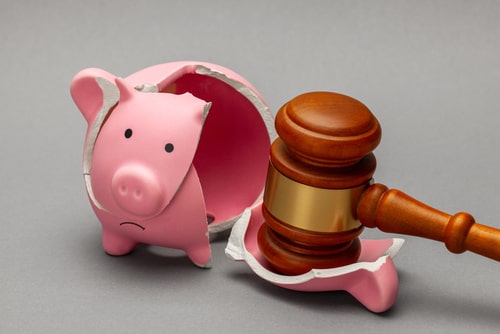Secured vs. Unsecured Debt: What to Know in Texas
 When considering bankruptcy in Texas, it is essential to understand the difference between secured and unsecured debt. These two types of debt are treated differently under bankruptcy law, and knowing how they are handled can help you make informed decisions about your financial future. A Texas lawyer can help you understand the best option for you.
When considering bankruptcy in Texas, it is essential to understand the difference between secured and unsecured debt. These two types of debt are treated differently under bankruptcy law, and knowing how they are handled can help you make informed decisions about your financial future. A Texas lawyer can help you understand the best option for you.
What is Secured Debt?
Secured debt is debt backed by collateral, such as a house or a car. When you take out a secured loan, you agree to give the lender the right to take possession of the collateral if you fail to make payments as agreed. Common examples of secured debt include mortgages and car loans.
In Texas, if you file for bankruptcy and have secured debt, you generally have two options: reaffirm the debt or surrender the collateral. Reaffirming the debt means that you agree to continue making payments on the loan, and in exchange, you get to keep the collateral. If you surrender the collateral, the lender can take possession of it, but you will no longer be responsible for the debt.
What is Unsecured Debt?
Unsecured debt, on the other hand, is not backed by collateral. This means that if you fail to make payments, the lender cannot take possession of any specific asset. Common examples of unsecured debt include credit card debt, medical bills, and personal loans.
In a Texas bankruptcy case, unsecured debt is typically discharged, meaning you are no longer legally obligated to pay it. However, this rule has some exceptions, such as student loans and certain types of taxes.
How Bankruptcy Treats Secured and Unsecured Debt
When you file for bankruptcy in Texas, the court will categorize your debts as either secured or unsecured. This categorization will determine how the debts are treated in your bankruptcy case. If you file for Chapter 7 bankruptcy, which is also known as liquidation bankruptcy, your non-exempt assets will be sold to pay off your debts. Secured debts will be paid first, and any remaining funds will be used to pay unsecured debts. They will be discharged if there are insufficient funds to pay their unsecured debts.
If you file for Chapter 13 bankruptcy, also known as reorganization bankruptcy, you will create a repayment plan to pay off your debts over three to five years. Under this plan, you will make monthly payments to a bankruptcy trustee. The trustee will then distribute the money to any creditors. Secured debts must be paid in full under the repayment plan, while unsecured debts may be paid in part or in full, depending on your income and other factors.
The Importance of Working with a Bankruptcy Attorney
Navigating the bankruptcy process can be complex and overwhelming, especially when it comes to understanding how different types of debt are treated. That is why working with an experienced Texas bankruptcy attorney who can guide you through the process and help you make informed decisions about your financial future is essential.
Your attorney can help you understand the difference between secured and unsecured debt, as well as how each type of debt will be treated in your specific bankruptcy case. They can also help you explore your options for dealing with secured debt, such as reaffirming the debt or surrendering the collateral.
Contact a San Antonio, TX Bankruptcy Lawyer
Ultimately, the goal of bankruptcy is to provide you with a fresh start and a path forward. By working with a New Braunfels, TX bankruptcy attorney, you can ensure that you take the proper steps to achieve that goal and rebuild your financial life. Call Law Offices of Chance M. McGhee at 210-342-3400 for a free consultation.






